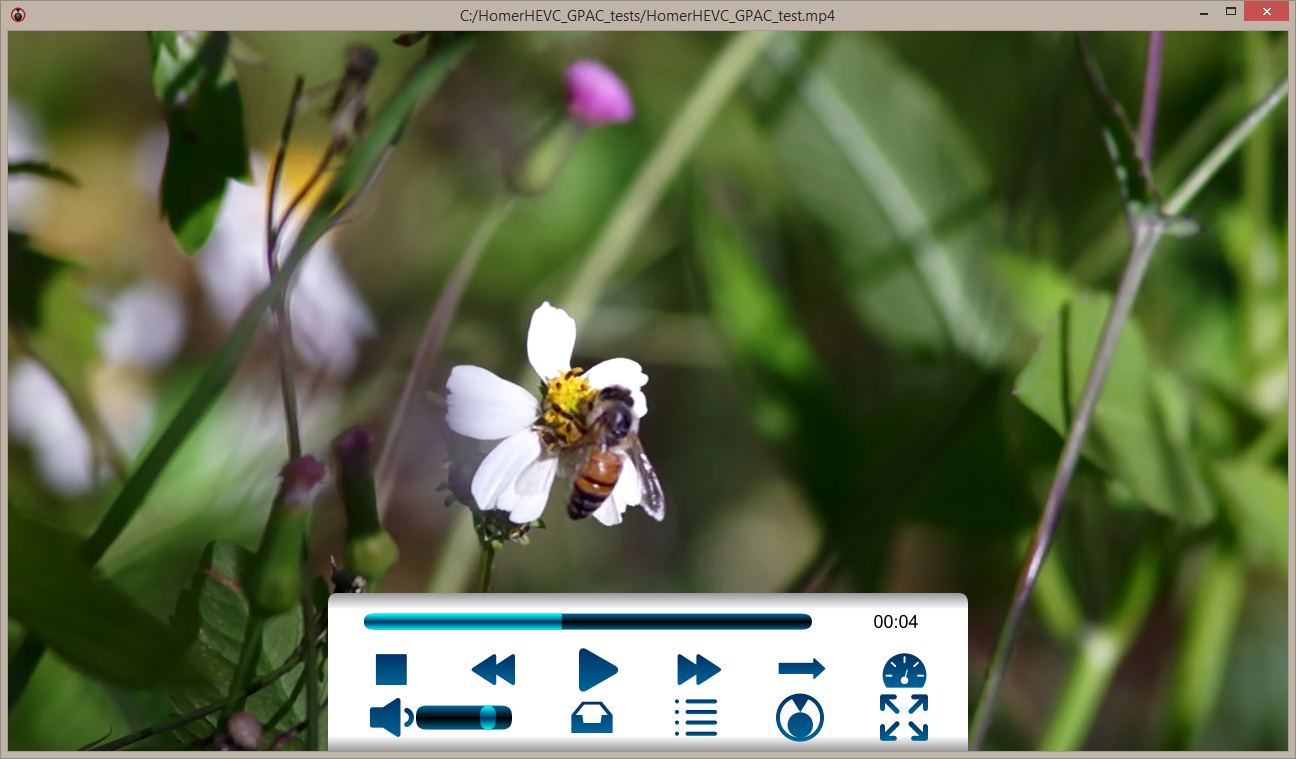Creating HEVC videos in .mp4 and .ts format using HomerHEVC and GPAC
This tutorial aims at showing how to combine HomerHEVC and GPAC to create HEVC content that should be valid for any player that supports HEVC decoding.
HomerHEVC is an open-source H.265-HEVC real time video encoder published under the LGPL license. Further Infomation about the HomerHEVC can be found in www.homerhevc.com.
GPAC is an open-source multimedia framework used for research and academic purposes and beyond through industrial collaborations. Further information about GPAC can be found in www.gpac.io.
The following steps show:
- how to encode raw videos in HEVC using HomerHEVC
- how to encapsulate the HEVC bitstream in a MPEG2 Transport Stream or
- how to encapsulate the HEVC bitstream in a MP4 file using GPAC and
- how to play it using MP4Client player from GPAC.
The entire process is collected in a Python script that can be downloaded from HomerHEVC repository in Github (https://github.com/jcasal-homer/HomerHEVC_DemoFiles/blob/master/HomerHEVC_GPAC_demo.py).
1- Download HomerHEVC latest release executable for windows from sourceforge (https://sourceforge.net/projects/homerhevc/files/) or HomerHEVC source code from GitHub (https://github.com/jcasal-homer/HomerHEVC/releases). Linux users please download and compile the code.
2- If you have downloaded the source code, compile HomerHEVC following the instructions in http://homerhevc.com/developers-corner/compilation-usage/
3- Encode your raw file by calling HomerHEVC application.
The following command gives a configuration example. Remember to modify and adapt the configuration to your content (resolution, framerate or bitrate).
C:\HomerHEVC\homer_app -i input_file.yuv -o output_file.265 -widthxheight 1280x720 -intra_period 100 -n_frames 4000 -sao 1 -frame_rate 25 -bitrate 800 -performance_mode 2For HomerHEVC configuration help, call:
C:\HomerHEVC\homer_app -h4- Download and install GPAC from http://gpac.io/downloads/gpac-
5- Encapsulate the HEVC bitstream (.265) in an .mp4 file using GPAC. Again you have to adapt the framerate (fps) to your content properties.
C:\GPAC\MP4Box -add output_file.265:fps=25 -new demo_video.mp4For MP4Box configuration help call:
C:\GPAC\MP4Box -h6- Encapsulate the .mp4 file in a MPEG2 Transport Stream (.ts).
C:\GPAC\mp42ts -prog demo_video.mp4 -dst-file demo_video.tsFor mp42ts configuration help call:
C:\GPAC\mp42ts -hAt this point the HEVC encoded and encapsulated .mp4 or .ts video file should be able to be played in any HEVC player.
7- Open the MP4Client player from the GPAC installation path and play the .mp4 or the .ts file.
This can also be done with the following commands.
C:\GPAC\mp4client.exe demo_video.mp4C:\GPAC\mp4client.exe demo_video.ts
MP4Client playing .mp4 file created using HomerHEVC and GPAC


1 comment for “HomerHEVC and GPAC”